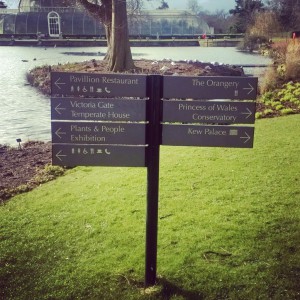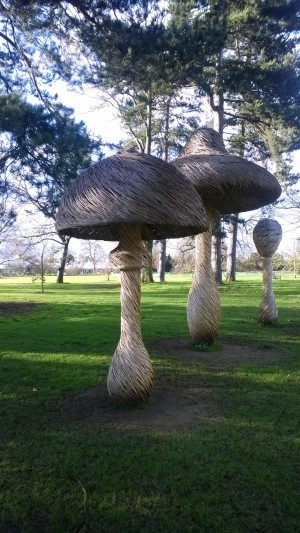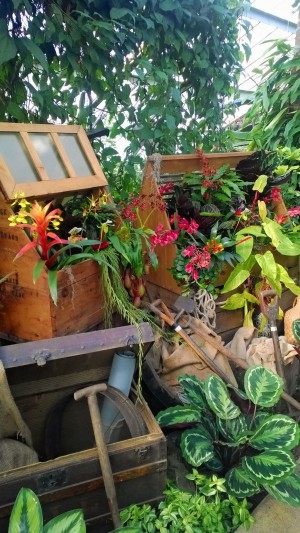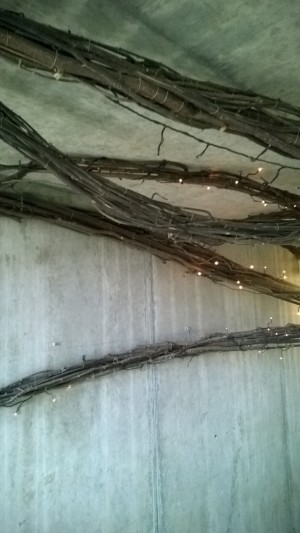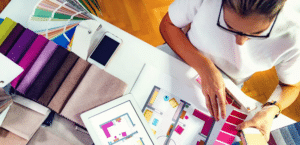A couple of weeks ago, as a late Christmas present I took my Mother to Kew Gardens. It was the first time I had been and although I had been told how fantastic it was, I still did not know what to expect. Now, I do not proclaim to be an expert on landscaping, however given my professional background I can always appreciate good design. To get to the site you walk through Kew, the road leading up to the Victoria entrance is a quiet Victorian Villa paved road, well-kept and standing proud. The Victoria Gate itself, although possessing its own charm, is relatively unassuming. It is not until you enter the park that you realise the sheer size of the place. Who knew that there could be so much open space in one of the world’s largest cities?
There is so much to see, and I was only there for a couple of hours, so I would suggest if you plan to make a visit, you free up the whole day. If you study garden design it is somewhere that you will undoubtedly be aware of, however I would suggest that anyone with an interest in design should go and have a look. Some of the design features could be applied to an interior space and the 7 elements of interior design can be seen, albeit in a different way, everywhere.
As well as the large enclosed areas containing the tropical plants there is plenty to see in the grounds. They have made great use of the large open space and there are surprises around every corner. Take these large mushroom shaped sculptures made from weaved natural materials. As you enter one of the green houses they cannot be seen however as you leave they seem to just appear from nowhere, drawing your attention further into the park. The shape or form of the objects mirror the surrounding trees, yet the texture is a little different and more detailed. The depth of finishes throughout the park add visual interest and entice you further in.
In the houses themselves there is a rich abundance of colour. The designers have obviously taken time to carefully create harmonious and balanced schemes. The difference is that these are all colours taken from nature and shows us, as designers, how we can use the world around us when creating a design scheme. In this picture you can see that old pieces of storage have been used as planters. The reuse of old furniture is a very popular movement due to the need for saving money and when done in the correct way it can look innovative and be extremely effective.
This isn’t just something that can be used in a garden environment. If you wanted to bring a little of the outdoors in, this could be achieved in the same way. Why not try using an old wooden box or part of a chest of draws to contain your house plants? Or maybe old crockery to create an indoor herb garden? This is a good way to create a nature inspired scheme at a relatively low cost.
There is obviously an abundance of natural light however this has been enhanced with up and down lighters as well as strip and spot lighting. In this image you can see how a relatively uninteresting access space has been added, with the use of tree roots and fairy lights. This is something that can be added to any space. Light has a great way of inviting people into a space, adding light to a cold or plain entrance can put a visitor at ease from the start. Getting someone into a building can be the hardest part so if you can achieve a successful entrance you’re already halfway there, giving you the opportunity to show off the rest of the space, whether it be a home, a gallery or a business.
Whether you are familiar with a particular area of design or not, as a designer, you should have the ability to look at a design critically, assess what works and what does not work, and apply this knowledge to your own projects. In my opinion the point of design is to attract and challenge, and in interior design this is done with the use of the 7 elements. Take a space, make the most of this space by changing its form to meet the function of the space. Enhancing this space using furniture and objects to add interest and texture. Finally using appropriate colour and lighting schemes to entice people into your space. It sounds easy and we all know that it’s not necessarily that way, however looking around for inspiration is always a good place to start.
References
Image A
Askew-Payler, A. (2014) kew gardens signpost, [photograph]. London.
Image B
Askew-Payler, A. (2014) kew gardens mushrooms, [photograph]. London.
Image C
Askew-Payler, A. (2014) kew gardens flower boxes, [photograph]. London.
Image D
Askew-Payler, A. (2014) kew gardens lighting, [photograph]. London.
